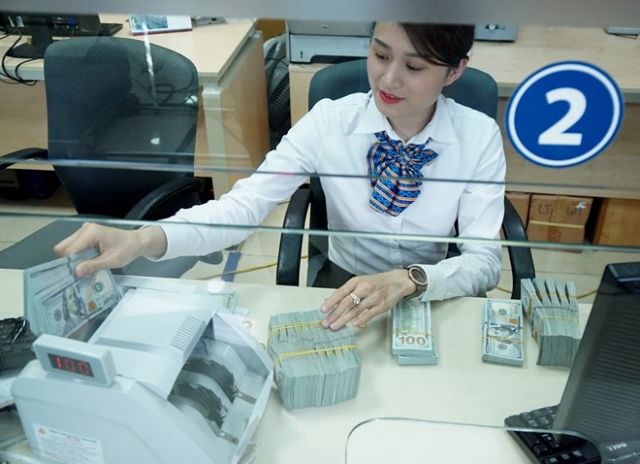The Vietnamese dong would remain stable against the US dollar in the near future, supported by the country’s robust foreign direct investment (FDI), a healthy current account surplus, and by the central bank’s active intervention, experts forecast.

The Vietnamese dong would remain stable against the US dollar in the near future, supported by the country’s robust foreign direct investment (FDI), a healthy current account surplus, and by the central bank’s active intervention, experts forecast.
According to analysts from the Fitch Group’s Fitch Solutions Macro Research, the dong will weaken slightly against the dollar to VND23,700 by the end of the year, and average VND23,440 per dollar over 2019, which represents a 1.8 per cent depreciation from the average of 2018.
Analysts attributed the modest weakness expectation to three reasons.
First, they said, Viet Nam’s FDI will likely remain robust over 2019, adding Fitch continued to project the Vietnamese economy to be a regional outperformer with a growth of 6.5 per cent in 2019 compared to an aggregate of 6.1 per cent for Asia.
“We believe that FDI inflows into the manufacturing sector will be further supported by improved diplomatic relationships combined with the Government’s open-door trade policy, alongside favourable demographics such as Viet Nam’s educated and low-cost labour force,” the report noted.
The Vietnamese processing and manufacturing sector remained the largest sector for FDI last year, with total registered capital of US$16.6 billion, up 4.4 per cent from $15.9 billion from the previous year.
Viet Nam’s strong economic growth outlook will also continue to attract FDI in the real estate sector as foreign developers look to capitalise on the rising affluence of the population and the desire for physical expansion among businesses. Real estate businesses attracted total FDI of $6.6 billion in 2018, more than doubling the $3.1 billion in 2017.
Second, Fitch forecast Viet Nam’s current account surplus to print around 2.1 per cent of GDP in 2019, which represents an expectation for the surplus to narrow slightly from 2.2 per cent in 2018.
Viet Nam is one of the two countries running a current account surplus among the Mekong region countries, with the other being Thailand which ran a 7.5 per cent surplus in 2018. The other countries, namely Laos, Cambodia, and Myanmar are running current account deficits in excess of 2 per cent.
“We continue to expect the current account surplus to be supported by the export-oriented manufacturing sector, helped by a possible rebound in global trade in the second half of 2019,” the report said.
Viet Nam’s goods trade surplus came in at $6.8 billion in 2018, on the back of a 13.8 per cent expansion in exports and a 12.1 per cent increase in imports.
Third, at $56.3 billion, representing 2.8 months of import cover, the State Bank of Viet Nam (SBV) has ample foreign exchange reserves to continue its course of active intervention to ensure currency stability, which suggests that the dong is likely to see minimal volatility over the coming months.
Over the long term, Fitch forecast the dong to weaken gradually against the dollar to due to higher inflation, but a relatively strong growth outlook is likely to put a floor under the depreciation of the currency.
“We forecast inflation in Viet Nam to average around 4.1 per cent over the next 24 months, as compared with 2.3 per cent in the US.”
According to Fitch, the SBV, utilising credit growth targets as its main monetary policy tool, is targeting credit growth of 14 per cent in 2019, the same rate achieved in 2018. At 14 per cent, credit growth still outpaces nominal GDP growth of about 10 per cent and this is likely to fuel inflationary pressures over the coming quarters.
“Given the Vietnamese economy’s reliance on export-led growth, upside price pressures is likely to warrant some dong depreciation against the US dollar to preserve Viet Nam’s export competitiveness, and we believe that this is likely to see the dong average VND23,850 per dollar in 2020,” Fitch forecast, adding the Vietnamese dong’s overvaluation, as suggested by its real effective exchange rate trading by 9.3 per cent above its 10 -year average, open room for further currency weakness over the longer term.
However, Fitch also noted: “Risks to the dong forecast are weighted to the downside. A dovish shift among major global central banks could see the SBV intervene to weaken the dong by more than we expect so as to maintain Viet Nam’s export competitiveness. Slowing global growth, trade uncertainty, and disruptions to global value chains could also adversely impact Viet Nam’s export sector, pressuring the SBV to weaken the dong further.” — VNS





